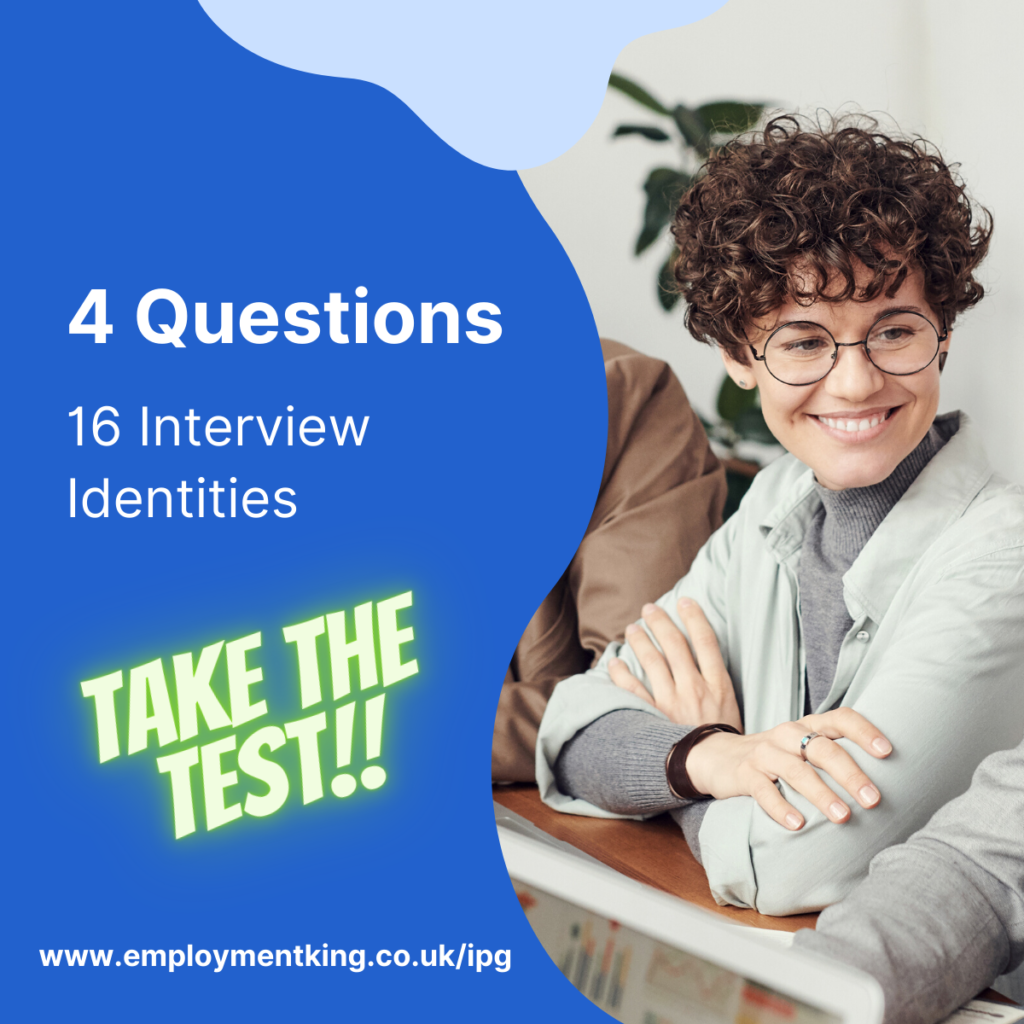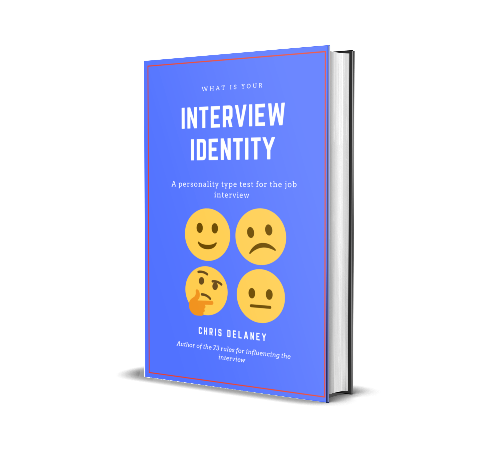In today’s competitive job market, only the strongest interviewees are offered high-paying roles.
While stating job experience and qualifications on the application form will get you a job interview it is the persuasive communication skills of the career professional that lands a job offer. The interview is where you truly make your case. Interviews are more than just answering questions—they’re about persuasion, impression management, and connecting with your interviewer on multiple levels.
Understanding psychological principles will give the savvy candidate an edge over the competition. The article explores how psychological tricks, rooted in the science of persuasion and social psychology, can increase an interviewee’s ability to win over the interview panel.
Cialdini’s Principles of Persuasion in Job Interviews
You can’t write an article on the psychology of persuasion without quoting Cialdini.
Reciprocity: Building Rapport by Giving (and then receiving)
The principle of reciprocity is simple: people feel obligated to return favours.
In an interview setting, reciprocity has to be subtle. By offering something of value to the interviewer—whether it’s information, insight, or a genuine compliment can create an overwhelming need for the interviewer to offer something in return for the initial ‘gift’.
For instance, during a discussion about the company’s challenges, offering a thoughtful idea or a unique perspective can create a sense of reciprocity. The interviewer might feel more inclined to view you favorably because you’ve provided something of value that they can use.
Authority: Presenting Yourself as an Expert
Interviewers are looking for candidates who can bring expertise to their roles.
By subtly establishing yourself as an authority in your field, you can significantly enhance your appeal. This doesn’t mean bragging; instead, it involves demonstrating your knowledge through well-prepared, detailed answers. Citing relevant experience, referring to industry standards, or mentioning certifications can all help establish your authority.
The interview prediction grid model (interview identity test) explains how being seen as a confident expert (charismatic interview identity) in the recruitment process vastly increases the chances of a candidate being offered the advertised role. The key is to balance confidence with humility, ensuring you come across as knowledgeable but not arrogant (egocentric interview identity).
Social Proof: Leveraging the Power of Testimonials and References
Social proof, the idea that people look to others to determine what is correct, can be powerful in an interview.
Providing examples (embedding the examples within the job interview answer) of positive feedback from previous employers, clients, or colleagues can reinforce your suitability for the job.
In addition, persuasive applicants will reference LinkedIn recommendations or bring up relevant endorsements which subtly remind the interviewer that others have recognized the candidate’s abilities. Many employers look at candidates LinkedIn profile prior to the interview and the applicant’s content, posts, and any recommendations create either a ‘halo’ or ‘horns effect.
It is also powerful to discuss how another employer has already offered the applicant a job, as this creates scarcity of persuasion as well as social proof.
Social proof not only boosts an interviewee’s credibility but also aligns with the interviewer’s desire to select a candidate validated by others.
Liking: Building a Personal Connection
People are more likely to say yes to someone they like.
During an interview, finding common ground with the interviewer can be invaluable. Common ground could be something as simple as a shared interest, or a similar career path, or any commonality (attended the same university, both eat at the same restaurant, or watch the same TV programme – all personal information that is easy to find on social media platforms once a job seeker has the interviewers name).
Engaging in light, relevant conversations about these topics can make the interviewee more likable. However, authenticity is crucial; forced attempts to connect can have the opposite effect.
In addition, showing genuine interest in the interviewer and the company culture can foster a positive, likable impression.
Scarcity: Highlighting Your Unique Qualities
Scarcity, the idea that people value what is rare, can be used to a career professional’s advantage by highlighting what makes them uniquely qualified for the position.
Whether it’s a rare skill set, a unique experience, a track record of being successful in the sector, or an uncommon perspective, emphasizing these aspects can make you stand out. For example, if you have experience in a niche area that the company is looking to expand into, make sure to bring this to the forefront during your interview.
Remember the other job applicants are likely to have a similar level of academia, experience, and knowledge, what the persuasive interviewee offers is something unique and valuable in addition to the norm.
Consistency: Aligning with the Company’s Values
People like to see consistency in others’ behaviour and beliefs.
In an interview, this means aligning your answers and examples with the company’s core values and mission. Researching the company thoroughly beforehand will help you tailor your responses to reflect these values.
If a company values innovation, for example, sharing past experiences where you brought new ideas to life can show that you’re a good fit. Consistency between what you say and what the company stands for can significantly strengthen your candidacy.
Cognitive Biases in Interviews
Halo Effect: Making a Strong First Impression
The halo effect is a cognitive bias where an initial positive impression influences subsequent judgments.
In a job interview, the first few minutes are crucial in setting the tone for the rest of the conversation. A confident handshake, a warm smile, and professional attire contribute to a strong first impression.
Preparing a succinct, compelling introduction about yourself that highlights key strengths can also help trigger the halo effect. Once the interviewer has a positive initial impression, they are more likely to view the rest of your responses through that favourable lens.
Warning: the horns effect is the opposite of the halo effect, a first bad impression (sweaty handshake, stuttering introduction, and weak body language) will create a negative lens that all interview answers are filtered through.
Anchoring: Setting the Tone for Key Discussions
Anchoring refers to the tendency to rely heavily on the first piece of information encountered when making decisions.
This piece of psychology can be used to the applicant’s advantage in an interview by setting the tone early by discussing a key success, or a unique selling point, something that the employer requires.
In a similar vein, when asked about your experience, starting with the most impressive achievement can set a high standard for the rest of the interview.
The technique is also used during salary negotiations. For example, if salary is discussed, mentioning a higher figure early on can serve as an anchor, making subsequent negotiations more favorable to you.
Confirmation Bias: Reinforcing Positive Assumptions
Confirmation bias is the tendency to search for, interpret, and remember information in a way that confirms our own preconceptions.
As an example, If an interviewee can create a positive perception early in the interview, confirmation bias may cause the interviewer to focus on aspects of their responses that reinforce the interviewers positive view, creating a self-fulfilling prophecy.
Subtly guide this process by consistently tying the interview answers back to stated strengths and experiences that align with the job requirements. Remember the three rules for a successful job interview are 1) identify the job criteria, 2) be a self-promoter 3) communicate with confidence.
By reinforcing the interviewer’s positive assumptions, the candidate will be remembered by the interviewer more favorably (and stated weaknesses that slip out during the interview will be subconsciously dismissed).
Nonverbal Communication: The Silent Influencer
Body Language: Conveying Confidence and Openness
Much research shows how body language can significantly influence how a person is perceived in an interview.
Open, confident postures – sitting up straight, leaning slightly forward, and using hand gestures when speaking—can convey confidence and self-assurance.
Avoid closed-off gestures such as crossing your arms, which can make you appear defensive.
Smiling (naturally not forced) and nodding occasionally when the interviewer speaks can also signal an attentive and agreeable candidate.
Eye Contact and Mirroring: Establishing Trust
Maintaining appropriate eye contact is crucial in building trust and rapport during an interview.
Eye contact shows confidence and sincerity. However, it’s important to strike a balance as too much eye contact can be perceived as aggressive, while too little can suggest insecurity.
Mirroring (subtly mimicking the interviewer’s body language), can also create a subconscious rapport. For example, if the interviewer leans forward, the candidate can mirror the same a few moments later. Mirroring can also be used verbally; mimicking tonality, volume, and word choice.
The mirroring technique can make the interviewer feel more comfortable and connected to the job applicants, increasing their chances of being remembered positively.
Hand Gestures: Enhancing Verbal Communication
Using hand gestures while speaking can make an interviewee’s verbal communication more engaging and memorable as research suggests that people who use hand gestures are often perceived as more energetic and enthusiastic.
Hand gestures can be particularly useful when explaining complex ideas or discussing your experiences. However, it’s essential to keep gestures natural and not overdo them, as excessive movement can be distracting.
Impression Management Techniques
Self-Promotion: Highlighting Your Achievements Effectively
Self-promotion involves presenting accomplishments in a way that highlights your competence without coming across as boastful.
When discussing achievements, focus on how the achievements benefited your previous employers and what you learned from those experiences.
For example, instead of saying, “I was the top salesperson,” you might say, “I consistently exceeded my sales targets by doing X, which contributed to a 20% increase in revenue for the company. An alternative way to achieve sales targets was to do Y but the negative impact of this approach was Z, which is why on this occasion I chose the first approach” This not only highlights your success but also demonstrates your understanding of its broader impact.
Ingratiation: Sincerely Complimenting the Interviewer or Company
Ingratiation involves using flattery or compliments to increase your likability.
While flattery is effective (everyone enjoys being praised), it’s important to be sincere.
Complimenting the interviewer on something specific—like their insights during the interview or the company’s recent achievements can create a positive atmosphere.
However, over-complementing or making insincere comments can backfire, making you seem disingenuous. The key is to find opportunities to express genuine admiration or respect without overstepping.

Emotional Intelligence: The Key to Managing Interactions
Self-Regulation: Staying Calm Under Pressure
Job interviews for most are very stressful.
Stress leads the job applicant to act in a way that doesn’t show their true selves, and therefore what the candidate can offer the organisation if they are successful in the recruitment process.
Emotional intelligence plays a critical role in how a career professional handles the stress and pressure of a job interview.
Self-regulation, a key component of emotional intelligence, involves managing your emotions and staying composed.
Techniques like deep breathing or visualization can help calm a person’s nerves before and during the interview. Repetition – attending many job interviews or undertaking mock interviews creates calmness through familiarity (knowing what to expect).
By maintaining composure an interviewee can think more clearly, respond more effectively, and project genuine confidence.
Empathy: Understanding the Interviewer’s Perspective
Empathy -the ability to understand and share the feelings of another, can be a powerful tool in an interview.
By considering the interviewer’s perspective (what they’re looking for in a candidate, their concerns, and their goals, the company values, leadership styles)a savvy candidate can tailor their responses to address the needs of the employer. Rule one for a successful job interview outcome, identify the job criteria.
For example, if the interviewer is concerned about a gap in an applicants employment history, the candidate can proactively address it by explaining how they used that time productively through, as an example, returning to education.
Being aware of the interviewer’s emotional response to an interview answer can help the interviewee change, adapt or build on the answer depending on their understanding of the employer’s feelings.
Also, demonstrating empathy shows that you are not only a good communicator but also attuned to others’ needs. A vital skill in some job roles.

Conclusion
By understanding and applying principles of persuasion, managing cognitive biases, using effective nonverbal communication, and leveraging emotional intelligence during a job interview will significantly increase the chances of a career professional gaining a job offer.
The techniques discussed will help an interviewee present their best self, making a strong impression. While psychological techniques can give you an edge in job interviews, it’s important to use them ethically. The goal is to present yourself authentically and build genuine connections.
Remember, the key is not just to be prepared, but to be self-aware and responsive to the dynamics of the interview process. With these insights, a job hunter will be well-equipped to navigate your next job interview with confidence.
References
- Cialdini, R. B. (2007).Influence: The Psychology of Persuasion (Revised Edition). Harper Business.
- Cialdini’s book is a foundational text in understanding principles like reciprocity, authority, and social proof, which are crucial in persuasive communication, including job interviews.
- Judge, T. A., & Cable, D. M. (2004). The effect of physical height on workplace success and income: Preliminary test of a theoretical model. Journal of Applied Psychology, 89(3), 428-441.
- This study explores how first impressions, including nonverbal cues like height, can influence perceptions of authority and competence in professional settings, such as job interviews.
- Todorov, A., Mandisodza, A. N., Goren, A., & Hall, C. C. (2005). Inferences of competence from faces predict election outcomes. Science, 308(5728), 1623-1626.
- Discusses how first impressions based on facial appearance can impact judgments of competence, relevant to the halo effect in interviews.
- Guthrie, C., & Diekmann, K. A. (2007). Cognitive biases in negotiator judgment: An experimental study. Negotiation Journal, 23(2), 105-119.
- Explores various cognitive biases, including anchoring and confirmation bias, which are applicable in interview settings when setting expectations and reinforcing positive perceptions.
- Ekman, P., & Friesen, W. V. (1969). Nonverbal leakage and clues to deception. Psychiatry, 32(1), 88-106.
- This classic study on nonverbal communication is useful for understanding how body language can reveal underlying emotions and intentions during interviews.
- Goffman, E. (1959).The Presentation of Self in Everyday Life. Anchor Books.
- Goffman’s work on impression management provides a theoretical foundation for understanding how individuals present themselves in social interactions, including job interviews.
- Goleman, D. (1995).Emotional Intelligence: Why It Can Matter More Than IQ. Bantam Books.
- Goleman’s book introduces the concept of emotional intelligence, which is key in managing one’s emotions and understanding others during high-stakes situations like job interviews.
- Rafaeli, A., & Sutton, R. I. (1990). Busy stores and demanding customers: How do they affect the display of positive emotion? Academy of Management Journal, 33(3), 623-637.
- This study explores how emotional displays can influence perceptions in professional settings, relevant to the discussion of self-regulation and empathy in interviews.
- Kacmar, K. M., & Ferris, G. R. (1991). Perceptions of organizational politics scale (POPS): Development and construct validation. Educational and Psychological Measurement, 51(1), 193-205.
- Explores the role of impression management in organizational contexts, providing insight into tactics like self-promotion and ingratiation during interviews.
- Bargh, J. A., & Chartrand, T. L. (1999). The unbearable automaticity of being. American Psychologist, 54(7), 462-479.
- Discusses the automatic nature of social behavior, including mirroring and other nonverbal communication strategies that can be employed in interviews.
Chris Delaney (2021) Book: What is your interview identity
- Explains the structured job interview process, unconscious bias and how an interviewee can present the best version of themselves







